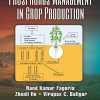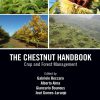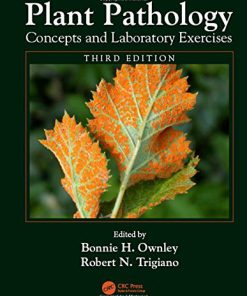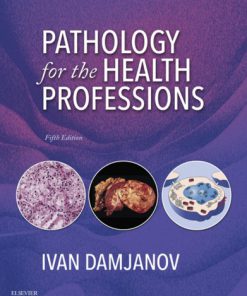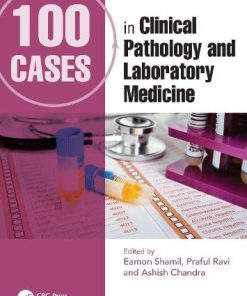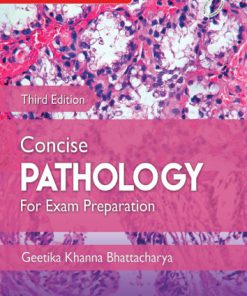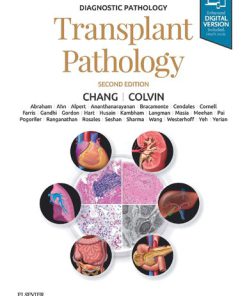Pathology for Toxicologists Principles and Practices of Laboratory Animal Pathology for Study Personnel 1st Edition by Elizabeth Mcinnes ISBN 1118755413 978-1118755419
$50.00 Original price was: $50.00.$25.00Current price is: $25.00.
Pathology for Toxicologists Principles and Practices of Laboratory Animal Pathology for Study Personnel 1st Edition by Elizabeth Mcinnes – Ebook PDF Instant Download/Delivery: 1118755413, 978-1118755419
Full download Pathology for Toxicologists Principles and Practices of Laboratory Animal Pathology for Study Personnel 1st Edition after payment
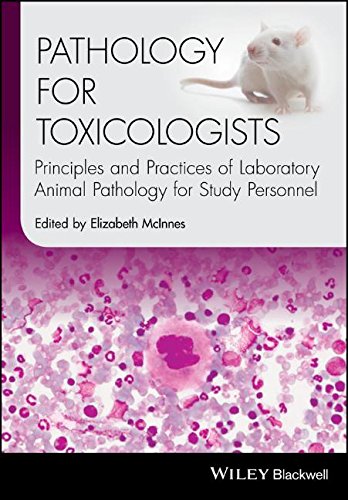
Product details:
ISBN 10: 1118755413
ISBN 13: 978-1118755419
Author: Elizabeth Mcinnes
Non-pathologists, such as toxicologists and study personnel, can find it difficult to understand the data they receive from pathologists. Toxicological pathologists write long, detailed and highly technical reports. Study personnel are under daily pressure to decide whether lesions described in pathology reports are treatment-related and thus important to the pharmaceutical company or whether the lesions are background changes and thus of little significance.
Written by experienced toxicological pathologists, Pathology for Toxicologists: Principles and Practices of Laboratory Animal Pathology for Study Personnel serves to bridge the gap in the understanding of pathology data, enabling non-pathologists to more easily comprehend pathology reports, better integrate pathology data into final study reports and ask pathologists relevant questions about the test compound.
This succinct, fully referenced, full colour book is suitable for toxicologists at all stages of their training or career who want to know more about the pathology encountered in laboratory animals used in safety studies. Key features include important chapters on spontaneous and target organ lesions in rats, mice, non-human primates, mini pigs, rabbits and beagle dogs as well as information on general pathology, macroscopic target organ lesions, ancillary pathology techniques, haematology, biochemistry and adversity.
Table of contents:
Chapter 1: An Introduction to Pathology Techniques
1.1 Animal Considerations
1.2 Necropsy
1.3 Lung Inflation with Fixative
1.4 Fixation
1.5 Making Glass Slides
1.6 Special Histochemical Stains
1.7 Decalcification
1.8 Immunohistochemistry
1.9 Tissue Crossreactivity Studies
1.10 Electron Microscopy
1.11 In Situ Hybridisation
1.12 Laser Capture Microscopy
1.13 Confocal Microscopy
1.14 Image Analysis
1.15 Digital Imaging
1.16 Spermatocyte Analysis
1.17 Good Laboratory Practice
1.18 Inhalation Studies
1.19 Continuous-Infusion Studies
1.20 Carcinogenicity
1.21 Biologicals
1.22 The Pathology Report
1.23 Conclusion
Chapter 2: Recording Pathology Data
2.1 What is a Pathology Finding?
2.2 Standardisation of Pathology Findings
2.3 ‘Inconsistencies’ in Pathology Recording
2.4 Blind Review
2.5 Historical Control Data: Pros and Cons
2.6 The Use of Peer Review in Pathology
Chapter 3: General Pathology and the Terminology of Basic Pathology
3.1 Cellular Responses to Insults
3.2 Inflammation
3.3 Circulatory Disturbances
3.4 Disorders of Tissue Growth
3.5 Tissue Repair and Healing
3.6 Neoplasia
3.7 Immune System
Chapter 4: Common Spontaneous and Background Lesions in Laboratory Animals
4.1 Rats
4.2 Mice
4.3 Dogs
4.4 Minipigs
4.5 Non-Human Primates
4.6 Rabbits
4.7 Experimental Procedures
4.8 Causes of Death in Rats and Mice
4.9 Conclusion
Chapter 5: Target Organ Pathology
5.1 Skin
5.2 Eye
5.3 Gastrointestinal Tract
5.4 Liver
5.5 Respiratory System
5.6 Urinary System
5.7 Lymphoreticular System
5.8 Musculoskeletal System
5.9 Cardiovascular System
5.10 Endocrine System
5.11 Reproductive System
5.12 Central and Peripheral Nervous System
5.13 Ear
Chapter 6: Clinical Pathology
6.1 Clinical Pathology in Study Phases and Good Laboratory Practice
6.2 What is Measured in Clinical Pathology?
6.3 Haematology
6.4 Coagulation
6.5 Clinical Chemistry
6.6 Urinalysis
6.7 Acute-Phase Proteins
6.8 The Biomarker Concept
6.9 Reference Intervals
6.10 Instrumentation, Validation and Quality Control
6.11 Data Analysis and Interpretation
6.12 Reporting
6.13 Food Consumption and Body Weight (Gain)
6.14 Organ Weights
6.15 Examples of Typical Clinical Pathology Profile Changes in Toxicologic Clinical Pathology
6.16 Microsampling
6.17 Conclusion
Chapter 7: Adversity: A Pathologist’s Perspective
7.1 LOAEL, NOEL and NOAEL: Definition
7.2 Adversity
7.3 Determining Adversity using Pathology Findings: Factors to Consider
7.4 Communicating NOAEL in Toxicity Studies
7.5 Conclusion
Chapter 8: Limitations of Pathology and Animal Models
8.1 Limitations of In Vivo Animal Models
8.2 Efficacy/Disease Models as Toxicology Models
8.3 Limitations of Efficacy/Disease Models as Toxicology Models
8.4 Limitations of Pathology within In Vivo Toxicology Models
8.5 Managing Risk Associated with Subjectivity and the Potential for Pathologist Error
People also search for:
pathology vs toxicology
famous toxicologists
is forensic pathology hard
pathologist and toxicologist
pathologists toxicologists anthropologist and psychiatrists are types of
Tags:
Elizabeth Mcinnes,Pathology,Toxicologists Principles,Laboratory Animal Pathology,Study Personnel
You may also like…
Biology and other natural sciences
Medicine
Essential Pathology for Dental Students + Pathology Practical Book for Dental Students Harsh Mohan
Medicine - Diseases
Concise Pathology For Exam Preparation 3rd Edition Geetika Khanna Bhattacharya
Medicine - Histology
Diagnostic Pathology: Transplant Pathology 2nd Edition Anthony C. Chang
Politics & Philosophy
Society and Social Pathology: A Framework for Progress 1st Edition R.C. Smith (Auth.)


